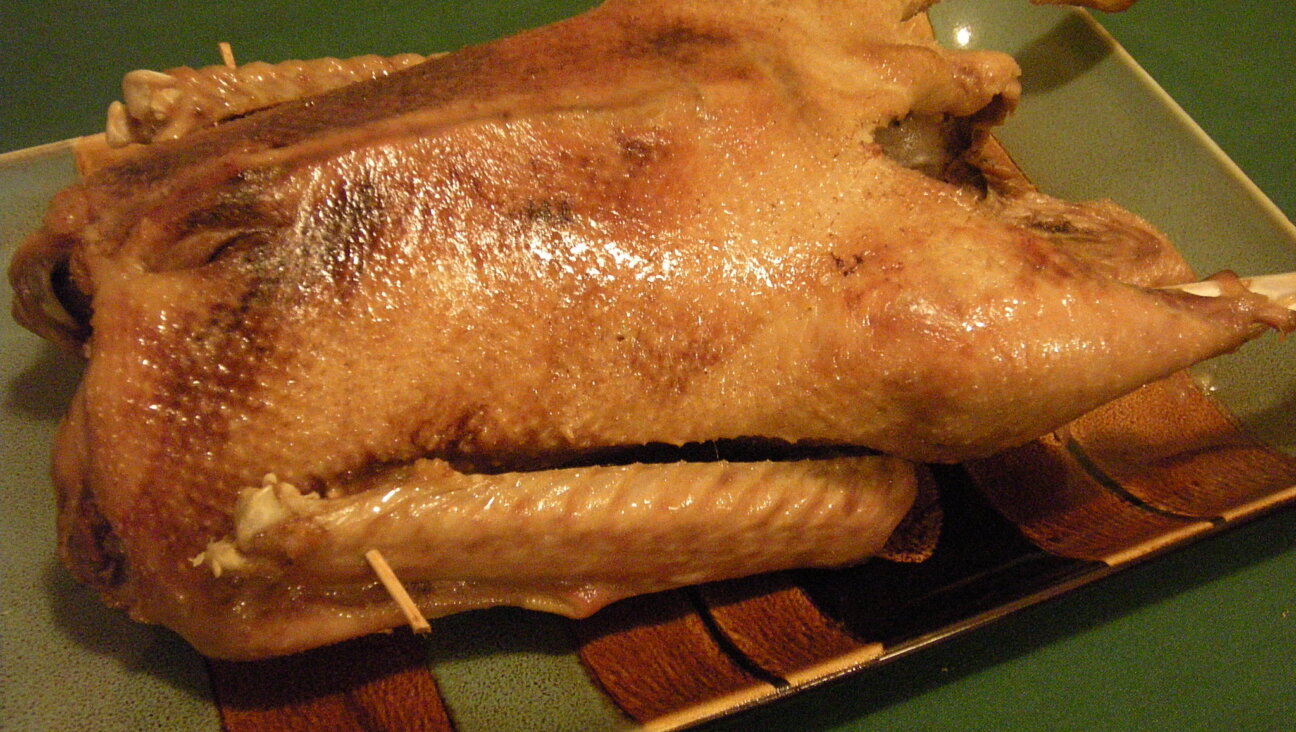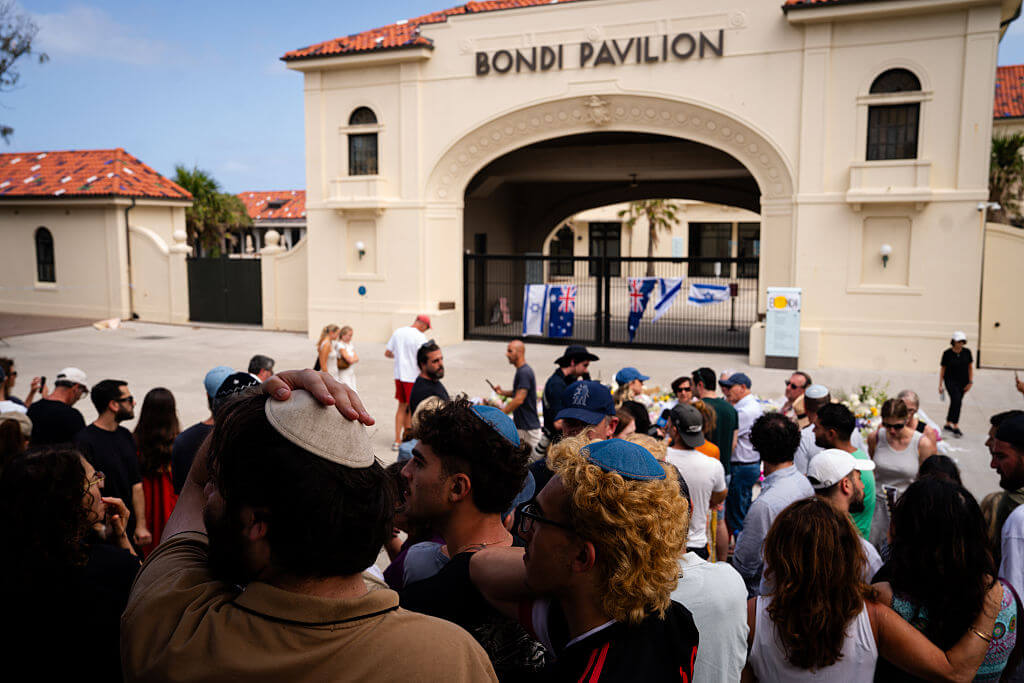A German museum aimed to honor Jewish wit. The result is downright demeaning.
The Haus der Kunst in Munich now has Yiddish insults mounted on its cornice

Photo by Doug Golub
Kibbizter, kvetcher, nudnick, nebbish, nudzh, meshugener, alter kocker, pisher, plosher, platke-macher
These ten Yiddish/Yinglish insults are mounted on the cornice of the Haus der Kunst art museum in Munich, Germany. The installation, entitled The Joys of Yiddish (2021), is the final iteration of a work by the late conceptual artist Mel Bochner (1940–2025).
According to the Haus der Kunst’s website, this word chain is supposed to “convey a particular humor that survived the National Socialist regime, despite all odds.” The color scheme — yellow-on-black — is meant to evoke the stigmatizing patches of the same colors forced upon Jews under Nazi rule.
The installation was named for the 1968 book The Joys of Yiddish by Leo Rosten — a collection of Yiddish words and phrases that made its way into English.
Unfortunately, the installation is an ill-conceived attempt to honor the Jewish humor of millions of Yiddish speakers murdered by the Nazis. It cheapens and reduces a nearly millennium-old language and culture to kitsch. Is this tired, old rehashing of Yiddish insults not itself a badge of stigmatization — a “yellow patch” if you will?
When Bochner’s The Joys of Yiddish debuted at the Spertus Institute in Chicago in 2006, it was meant as a statement on the Jewish immigrant experience in America. It dealt with linguistic barriers, between immigrants and their new country, and between immigrant parents and their children. (Bochner was raised by Yiddish-speaking parents but never learned the language himself.)
At the Haus der Kunst, however, the piece takes on a very different meaning. Originally called the Haus der Deutschen Kunst (House of German Art) when it opened in 1937, it was intended by its Nazi builders as a temple to “Aryan” art. Mounting Yiddish insults on that building is, at first glance, a defiant and transgressive act.
Yet the cutesy terms Bochner chose (a subset from the Chicago original) are wholly insufficient to the task. Instead of switching out a word here and there, he could have transgressed against the art-school reject Hitler (may his name be obliterated) on the façade of his would-be temple to Aryan art, with some stronger epithets. Perhaps yimakh-shmoynik, paskudnyak, or the well-known mamzer?
Of course, no words in any language can convey the evil of what Hitler’s Nazis did to the Jewish people, and to Jewish diasporic languages. But that’s no excuse for not trying. Was Bochner’s intent to jab the viewer, or merely to tickle?
Prof. Sunny S. Yudkoff, in a 2022 journal article, notes that Bochner’s oeuvre often deals with the failure of words to sufficiently convey a particular meaning, with language’s perceived transparency and its actual instability. Yet despite the “performative failures” (as Prof. Yudkoff puts it) of Bochner’s other works, the failures of The Joys of Yiddish seem to be a bug rather than a feature.
To convey the Yiddish humor that survived the Nazis, we might look to the Jews of Lublin. During the German occupation, an SS officer commanded a group of Jewish men, at gunpoint, to entertain him. According to testimony recorded by Moshe Prager, they sang a well-known Yiddish song, replacing the refrain lomir zikh iberbetn (let’s make up) for mir veln zey iberlebn (we will outlive them). Despite the similarity of Yiddish to German, the SS officer apparently didn’t understand the phrase, giving those Jews a good laugh at their oppressors’ expense.
This time around, Bochner unwittingly perpetuates a long American Jewish tradition of treating Yiddish as a punchline. To do so in Munich is to internationalize that tradition in a shamefully conspicuous way.
According to a 2021 conversation between the artist and curator Andrea Lissoni, Bochner’s parents “were not really interested in us kids learning Yiddish, because […] it was a secret language.” This dynamic is all too familiar. But instead of digging in and working with Yiddish on its own terms, the artist engaged with it only superficially, in what Prof. Jeffrey Shandler has termed the “post-vernacular” mode. Bochner simply picked some words out of Rosten’s book, several of which are Yinglish Americanisms, that he thought most American Jews of his generation would have heard and known.
To do so in Chicago or New York as a comment on cultural assimilation is a sad reflection on American Jews’ cultural impoverishment. To recycle the piece into a provocation toward German Holocaust memory, or a tribute to the humor of murdered European Jewry, is lazy and demeaning.
In fairness, the late Mr. Bochner isn’t here to defend his honor. Then again, neither are the millions of Yiddish-speakers murdered by the Nazis.
So what could the curators of the Haus der Kunst do instead to honor them? Maybe host an exhibition of works by Yiddish-speaking artists who survived or perished in the Holocaust. Or commission a new work inspired by Yiddish anti-Nazi jokes and folksongs. It shouldn’t be hard to improve on what’s there now.
















